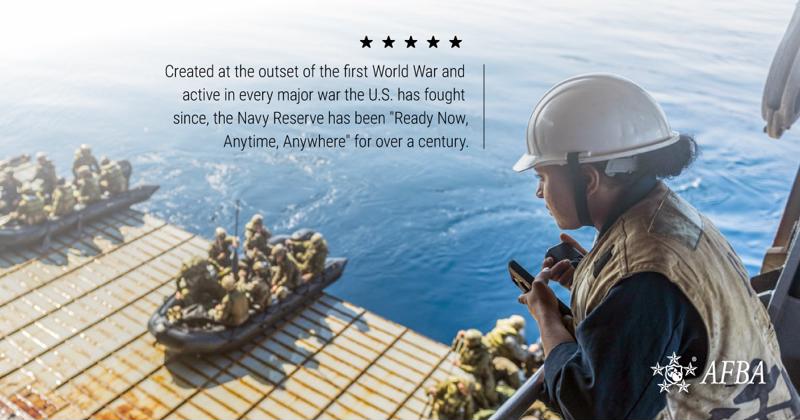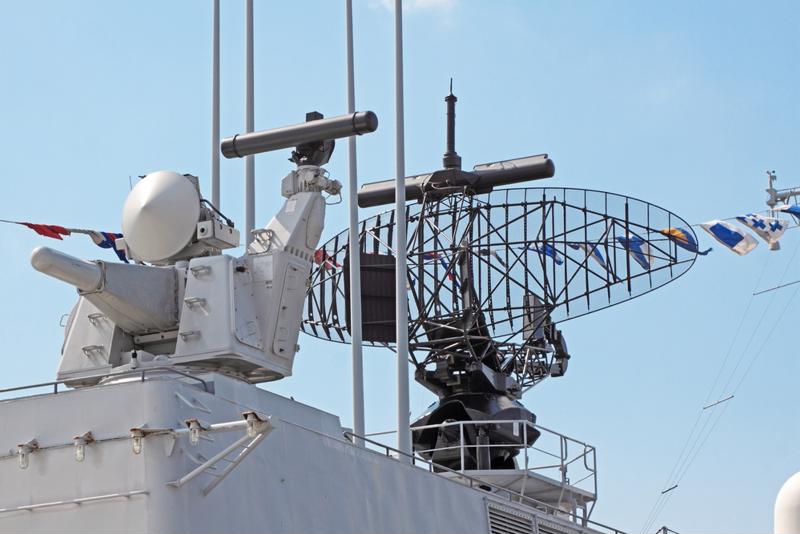Coming straight on the heels of the United States Coast Guard Reserve's 78th birthday on Feb. 19, the U.S. Navy Reserve will celebrate its 104th anniversary on Sunday, March 3, 2019.
Created at the outset of the first World War and active in every major war the U.S. has fought since, the Navy Reserve has been "Ready Now, Anytime, Anywhere" for over a century.
More than 100 years of service
Reservists have been important to America ever since the days of the Revolutionary War, when in 1775 the first citizens took to the sea to fight the British, even before the Continental Congress had created the Continental Navy.
Yet the present institution was not officially formed until March 3, 1915, when legislation was passed to create what was then known as the Naval Reserve Force.

The Reserve resulted from the efforts of Secretary of the Navy Josephus Daniels and his assistant, a young Franklin D. Roosevelt, who lobbied Congress for funding after the outbreak of World War I in 1914. Once the United States entered the war in 1917, American reservists served in the cockpits of biplanes and hunted down German U-boats.
Despite the dire financial situation the U.S. found itself in during the Great Depression, the Naval Reserve managed to find funding and actually expand with the creation of the Naval Aviation Cadet program and the Naval Reserve Officer Training Corps. This put the Reserve in a strong position once World War II broke out in 1939, and by 1941 nearly all of its members were serving on active duty. Later that year, it was reservists who fired the first U.S. shots of the second World War, when sailors from Minnesota serving aboard the USS Ward sunk a Japanese mini-submarine outside the entrance to Pearl Harbor.
Following the attack on Pearl Harbor and America's entrance into the war, the Navy swelled from a force of 383,150 to one of more than 3.4 million. The vast majority of them were reservists, five of whom would go on to serve as U.S. presidents: John F. Kennedy, Lyndon Johnson, Richard Nixon, Gerald Ford and George H.W. Bush. Jimmy Carter also served in the Reserve before becoming Commander in Chief, though he did so after the conclusion of WWII.
The Cold War that followed sent naval reservists to Korea and Vietnam, and the organization expanded once more during the defense build-up of the 1980s. In the next decade, over 21,000 reservists supported Operations Desert Shield and Desert Storm.
Recognizing the work of today's reservists
In 2005, the Naval Reserve changed to the Navy Reserve.
Since Sept. 11, 2001, there have been more than 70,000 mobilizations of Selected Reservists, and over 4,500 deployments by reservists serving on Full-Time Support. Today there are over 100,000 reservists serving as either the Selected Reserve (SELRES) or Individual Ready Reserve (IRR) Sailors, amplifying the Navy's core capabilities, such as forward presence, deterrence, sea control, humanitarian assistance and disaster response.
According to Military.com, on any particular day, a full quarter of the Navy Reserve is hard at work delivering global operational support to our fleet and combat forces.
On Sunday, March 3, Americans should heed the words of Admiral William J. Fallon, who once urged the nation to "remember that the Reserves, which represent twenty percent of our warfighting force, are absolutely vital to our Navy's ability to fight and win wars now and in the future."


